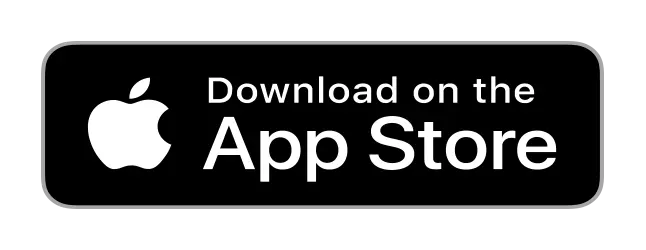
Discover whether modern client management software outperforms traditional methods for service businesses. We compare efficiency, costs, and practical benefits to help you make the right choice.
The way service businesses manage their clients has evolved dramatically over the past decade. While some business owners still rely on traditional methods like spreadsheets, paper files, and manual processes, others have embraced digital client management software to streamline their operations.
This shift raises an important question: which approach truly delivers better results for your business? The answer isn't always straightforward, as it depends on various factors including business size, industry type, budget constraints, and growth objectives.
Understanding Traditional Client Management Methods
Traditional client management typically involves a combination of manual processes and basic digital tools. Many service businesses have relied on these methods for years, building their operations around familiar systems.
Common traditional methods include:
- Paper-based filing systems for client information
- Excel or Google Sheets for tracking client data
- Physical calendars or basic scheduling tools
- Manual invoice creation and tracking
- Phone calls and emails for all client communication
- Handwritten or basic digital estimates
These methods often feel comfortable because they're familiar. Many business owners have used variations of these approaches since starting their companies, and they understand exactly how each process works.
However, traditional methods also come with significant limitations. As businesses grow, manual processes become increasingly time-consuming and error-prone. Information gets scattered across multiple locations, making it difficult to maintain a comprehensive view of client relationships.
The Rise of Client Management Software
Client management software represents a fundamental shift in how service businesses organize and interact with their customers. These digital platforms consolidate multiple business functions into unified systems designed to improve efficiency and reduce administrative burden.
Modern client management solutions typically offer integrated features that handle everything from initial client contact through project completion and payment processing. This comprehensive approach eliminates the need to juggle multiple tools and reduces the risk of information falling through the cracks.
Key features of client management software include:
- Centralized client databases with complete contact information
- Automated scheduling and appointment management
- Digital estimate and proposal creation
- Integrated invoicing and payment processing
- Communication tracking and history
- Project management and job tracking
- Financial reporting and analytics
The integration aspect is particularly valuable. Instead of maintaining separate systems for scheduling, invoicing, and client communication, everything operates within a single platform that keeps all information synchronized and accessible.
Efficiency Comparison: Time and Resource Management
When comparing efficiency between traditional methods and software solutions, the differences become apparent quickly. Traditional approaches often require significant time investment in routine administrative tasks that software can automate or streamline.
Consider the process of creating and sending an estimate. Traditional methods might involve:
- Gathering client information from multiple sources
- Creating an estimate in a word processor or spreadsheet
- Manually calculating totals and taxes
- Converting the document to PDF
- Sending via email
- Following up manually if no response is received
Client management software typically reduces this process to a few clicks. The system pulls client information automatically, applies standard pricing and calculations, generates professional-looking documents, and can even send automated follow-up reminders.
This efficiency gain compounds across all business operations. Scheduling becomes faster, invoicing requires less manual input, and client communication becomes more organized and trackable.
Cost Analysis: Initial Investment vs. Long-term Value
The financial comparison between traditional methods and software solutions requires looking beyond initial costs to consider long-term value and hidden expenses.
Traditional methods might seem less expensive upfront, especially if you're already using basic tools like spreadsheets. However, the true cost includes the time spent on manual processes, the potential for errors that cost money to fix, and the opportunity cost of not being able to take on additional clients due to administrative limitations.
Client management software typically involves monthly or annual subscription fees, but these costs often pay for themselves through improved efficiency and reduced errors. Many businesses find they can handle more clients with the same amount of administrative time, effectively increasing their capacity without hiring additional staff.
Hidden costs of traditional methods include:
- Time spent on repetitive manual tasks
- Errors in calculations or data entry
- Lost opportunities due to slow response times
- Difficulty scaling operations as the business grows
- Increased stress and potential burnout from administrative burden
Software solutions eliminate many of these hidden costs while providing additional value through features like automated reporting, client insights, and professional presentation that can help win more business.
Scalability and Growth Considerations
One of the most significant differences between traditional methods and software solutions becomes apparent as businesses grow. Traditional approaches that work well for a handful of clients often become unmanageable as the client base expands.
Spreadsheets become unwieldy with hundreds of rows of data. Paper filing systems require increasing amounts of physical space and become difficult to search. Manual scheduling becomes a complex puzzle that takes hours to manage effectively.
Client management software, on the other hand, is designed to scale with your business. Adding new clients doesn't significantly increase the administrative burden because the system handles much of the organization and automation automatically.
This scalability advantage extends beyond just handling more clients. Software solutions often provide insights and analytics that help businesses identify growth opportunities, understand client patterns, and make data-driven decisions about business development.
Professional Image and Client Experience
The way you manage client relationships directly impacts how professional your business appears to potential and existing customers. This perception can significantly influence client acquisition and retention rates.
Traditional methods often result in inconsistent client experiences. Estimates might look different each time, communication might be scattered across various channels, and response times can vary depending on how organized your manual systems are at any given moment.
Client management software helps create consistent, professional interactions. Estimates and invoices maintain uniform branding and formatting. Client communication is tracked and organized. Response times improve because information is readily accessible and processes are streamlined.
Many clients now expect digital convenience, such as online payment options, digital document delivery, and prompt communication. Businesses using traditional methods may find themselves at a disadvantage when competing against companies that offer these modern conveniences.
Data Security and Backup Considerations
Data protection is a critical consideration that often favors software solutions over traditional methods. Paper documents can be lost, damaged, or destroyed. Spreadsheets stored locally are vulnerable to computer crashes, theft, or accidental deletion.
Reputable client management software providers typically offer robust security measures including data encryption, regular backups, and secure cloud storage. This level of protection is difficult and expensive for small businesses to implement on their own using traditional methods.
Additionally, software solutions often include user access controls, allowing business owners to grant specific permissions to employees while maintaining overall security. This capability is particularly valuable as businesses grow and need to involve multiple team members in client management processes.
Integration with Other Business Tools
Modern businesses often use multiple tools for different aspects of their operations. The ability to integrate these tools can significantly impact overall efficiency and data accuracy.
Traditional methods typically operate in isolation, requiring manual data transfer between different systems. This approach increases the risk of errors and creates additional administrative work.
Client management software often integrates with other business tools such as accounting software, payment processors, and marketing platforms. These integrations eliminate duplicate data entry and ensure information remains consistent across all business systems.
For service businesses using comprehensive platforms, integration might be built-in rather than requiring separate connections. This approach provides even greater efficiency by eliminating the need to manage multiple software subscriptions and integrations.
Learning Curve and Implementation Challenges
Transitioning from traditional methods to software solutions does require an initial investment in learning and setup time. This transition period can feel overwhelming, especially for business owners who are comfortable with their existing processes.
However, most modern client management software is designed with user-friendliness in mind. Many platforms offer intuitive interfaces, helpful onboarding processes, and customer support to ease the transition.
The learning curve is typically temporary, while the benefits of improved efficiency and organization are ongoing. Many business owners find that the time invested in learning new software pays dividends quickly through reduced administrative burden and improved client management capabilities.
Starting with basic features and gradually expanding usage can help make the transition more manageable. Most software solutions allow users to implement features progressively rather than requiring immediate adoption of all capabilities.
Industry-Specific Considerations
Different service industries have varying client management needs, and the choice between traditional methods and software solutions may depend partly on industry-specific requirements.
For example, HVAC businesses often need to track equipment warranties, maintenance schedules, and emergency service calls. Photography businesses might focus more on project timelines, image delivery, and seasonal booking patterns. Lawn care services typically require route optimization and seasonal service adjustments.
Generic traditional methods like spreadsheets treat all businesses the same way, requiring significant customization to address industry-specific needs. Specialized client management software often includes features designed specifically for certain industries, providing immediate value without extensive customization.
Even general-purpose client management platforms typically offer enough flexibility to accommodate industry-specific workflows while providing the core benefits of digital organization and automation.
Making the Right Choice for Your Business
The decision between traditional methods and client management software ultimately depends on your specific business situation, goals, and priorities. However, several factors can help guide this decision.
Consider software solutions if you're experiencing any of the following challenges:
- Spending excessive time on administrative tasks
- Making frequent errors in estimates, invoices, or scheduling
- Struggling to keep track of client information and communication
- Wanting to grow your business but feeling limited by current processes
- Competing against businesses that offer more professional, convenient client experiences
Traditional methods might still work if your business is very small, has simple client management needs, and you're satisfied with current growth levels. However, even small businesses often benefit from the efficiency and professional image that software solutions provide.
The key is to evaluate your current processes honestly and consider where improvements could have the biggest impact on your business success and personal satisfaction with running your company.
Implementation Best Practices
If you decide to transition to client management software, following best practices can help ensure a smooth implementation and maximize the benefits.
Start by clearly identifying your most pressing client management challenges. This focus will help you prioritize which features to implement first and measure the impact of the change.
Take advantage of free trials offered by most software providers. This hands-on experience will give you a realistic sense of how the software fits your workflow and whether the interface feels intuitive for your needs.
Plan for a gradual transition rather than trying to change everything at once. You might start by using the software for new clients while maintaining traditional methods for existing clients, then gradually migrating historical data as time permits.
Invest time in proper setup and data organization from the beginning. Taking shortcuts during implementation often creates problems later and reduces the long-term benefits of the software.
The choice between client management software and traditional methods represents more than just a technology decision—it's a choice about how you want to run your business and serve your clients. While traditional methods have served many businesses well, the advantages of modern software solutions are becoming increasingly difficult to ignore.
For most service businesses, client management software offers superior efficiency, scalability, and professional presentation compared to traditional methods. The initial learning curve and subscription costs are typically offset by time savings, reduced errors, and improved client satisfaction.
As client expectations continue to evolve and competition increases across most service industries, businesses using traditional methods may find themselves at a growing disadvantage. The question isn't necessarily whether to make the transition, but rather when and how to implement it most effectively.
The most successful approach is often to start small, focus on solving your biggest pain points first, and gradually expand your use of software features as you become more comfortable with the platform. This measured approach allows you to realize benefits quickly while minimizing disruption to your existing operations.

